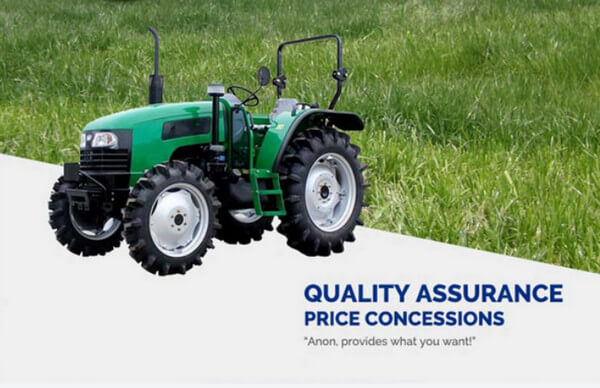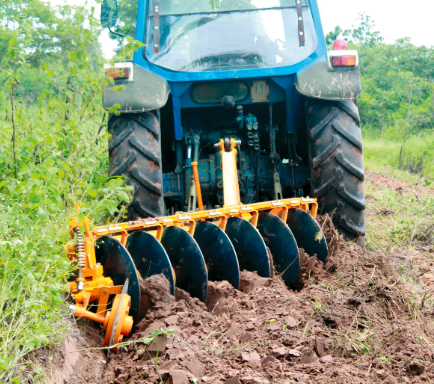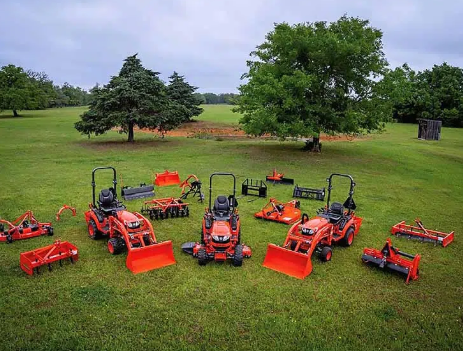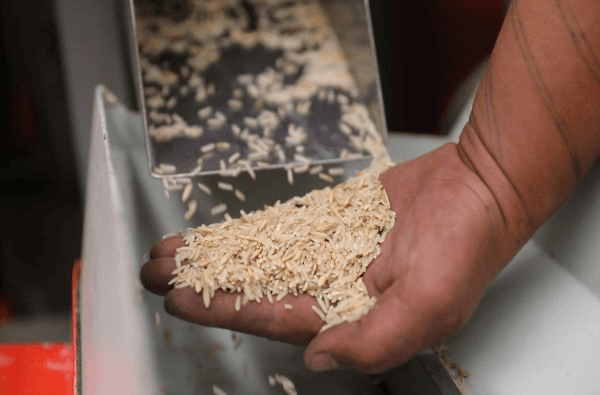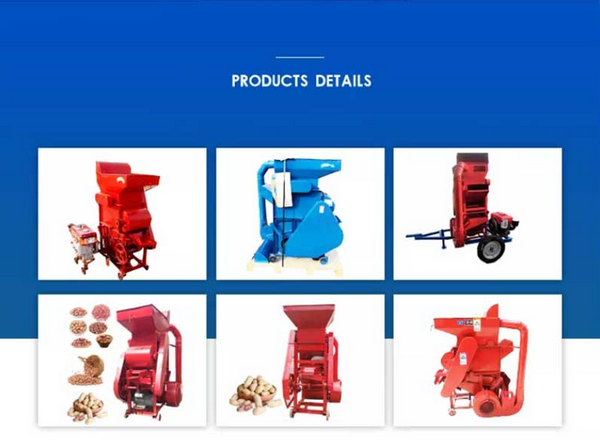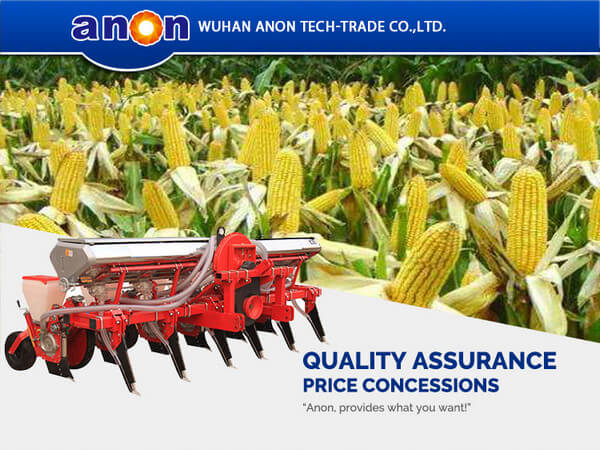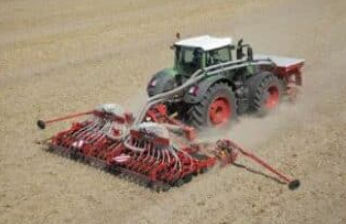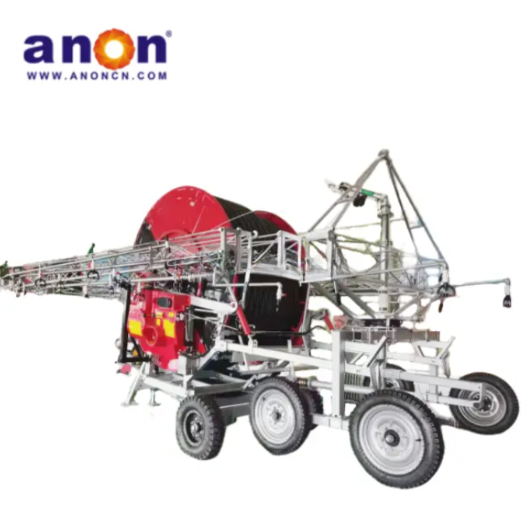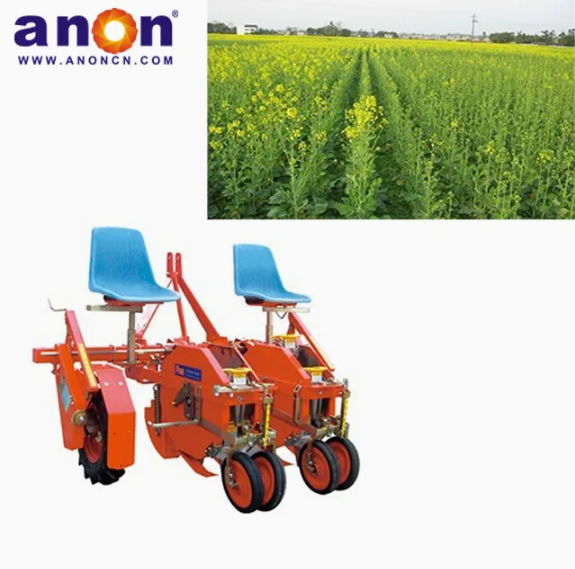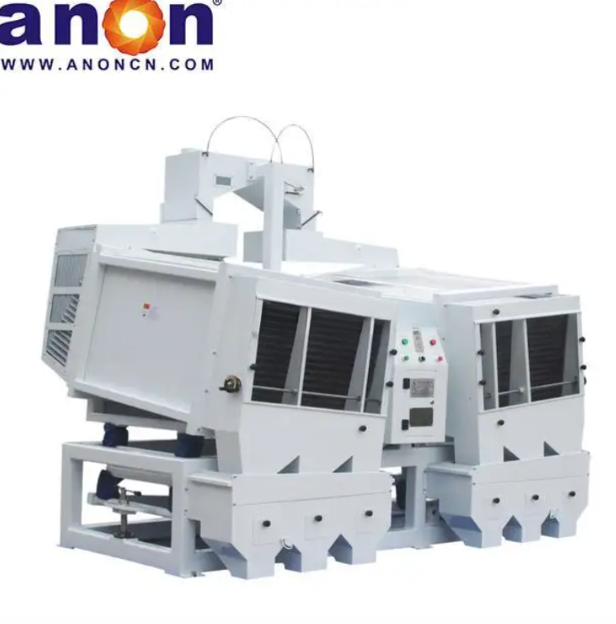Introduction
During busy farming seasons, seeding efficiency is very important. That’s why seeders were invented—they are agricultural machines designed to solve this problem. Seeders can significantly increase seeding efficiency, and some types also improve planting accuracy. I will introduce you to the different types of seeders, their applications, and their advantages to help you choose the right seeder for your needs.
Hand Push Seeder
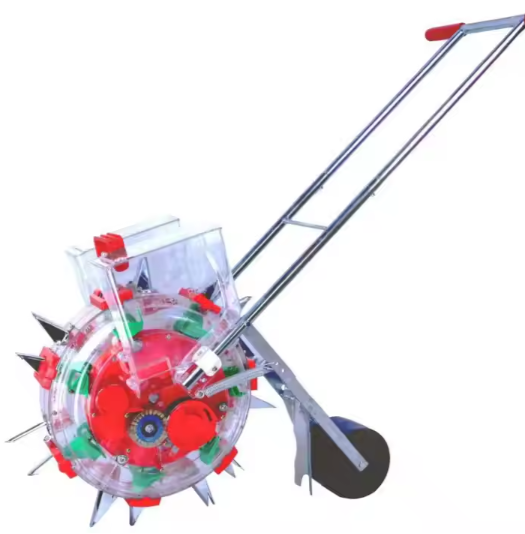
A hand push seeder is a simple, compact seeding machine that can be used to manually push the machine forward, driving the transmission mechanism that drives the seeding wheel. This mechanism distributes and delivers a fixed amount of seeds to the soil based on their weight, ultimately completing the integrated operations of furrowing, sowing, and covering.
Application
Hand push seeders have a wide range of applications, primarily suitable for small-scale, multi-variety, and scattered plot seeding operations. They can sow a wide variety of seeds, such as corn, soybeans, rapeseed, and various small vegetable seeds.
Advantages
Hand push seeders are lightweight, low-cost, and easy to operate. They also provide uniform sowing and efficient planting, making them suitable for small-scale, diversified crop planting.
Broadcast Seeder
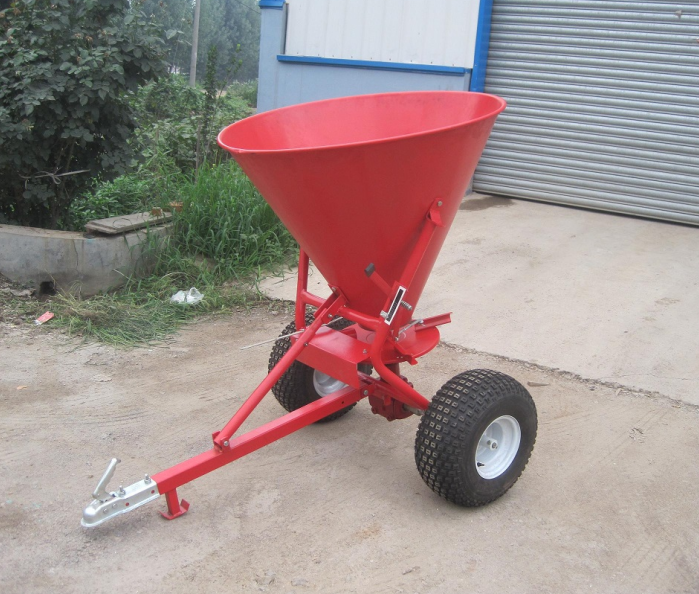
A broadcast seeder is a machine that evenly spreads seeds on the ground. The most common type is the centrifugal seed spreader, which is usually mounted on a tractor. It mainly consists of a seedbox, a spreading disk, and a drive system, and the seedbox often includes a mixer.
The working principle of a broadcast seeder is quite simple. The spreading disk is located below the seed box and is powered by a pulling device. It rotates at a speed of about 500 to 1,000 revolutions per minute. The seeds are mixed inside the seed box and fall onto the spreading disk. Due to centrifugal force, the seeds are then spread out in a straight line. The width of the spread depends on the type of seeds, the speed of the spreading disk, and the height above the ground, typically reaching between 6 to 15 meters.
Application
When using a broadcast seeder, the seeds may not be spread very evenly. This method is suitable for crops that don’t need precise spacing, like grass, rice, and tree seeds. You can also spread some powdered or granular materials, such as lime, fertilizer, and snow-melt products.
Advantages
The structure of a broadcast seeder is quite simple, so you don’t need to do complicated operations. It’s easy and fast to use for seeding. Plus, you can spread any granular material, which means the size of the seeds isn’t a limitation.
Seed Drill
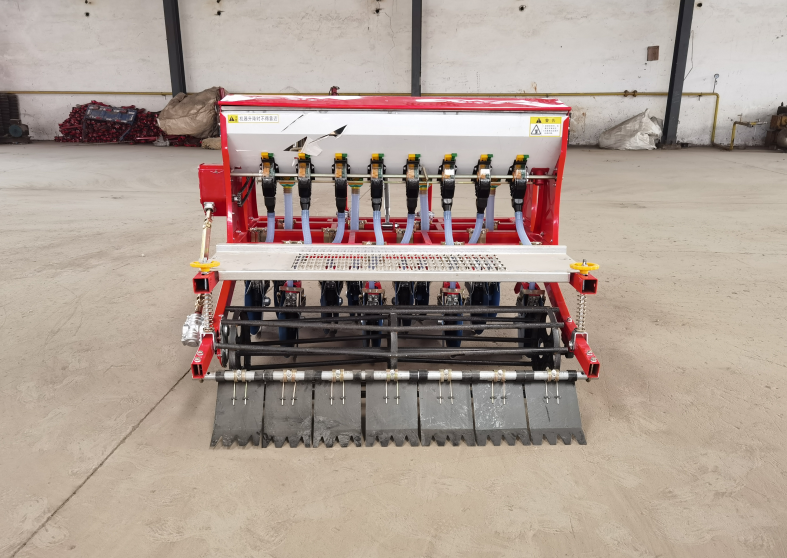
A seed drill is an agricultural machine that evenly plants seeds in rows based on your chosen row spacing, seeding depth, and seed quantity. It usually consists of a frame, pulling or mounting device, seed box, seed dispenser, drive system, seed tube, opener, marker, wheels, and soil covering device.
The seed dispenser and opener can vary depending on the type of crop. The most common seed dispenser is the outer-fluted type, while there are several types of opener including hoe-type, knife-type, single-disc, or double-disc.
When in operation, the tractor pulls the seed drill forward. The opener digs seed furrows at the depth you set. The wheels turn, activating the seed dispenser through the drive system. As the wheel-type seed dispenser rotates, seeds are evenly released into the seed ditch, then fall into the opener and slide down into the seed ditch. Finally, the soil covering device goes over the furrow, covering the seeds with soil and compacting it a bit. This helps the seeds make close contact with the soil, which is good for the seed’s germination and growth.
When you want to stop working, you can use the lift system to change the opener from working mode to transport mode. At the same time, the clutch in the drive system disconnects, which stops the seed dispenser from working.
Application
A seed drill is suitable for planting small kernel crops, such as wheat, barley, oats, buckwheat, rice, and canola. These crops require wide row spacing and close planting spacing. The seed drill can increase planting density, which helps improve both the yield and quality of the crops.
Advantages
A seed drill can meet your needs for planting various types of crops. If it has a fertilizer box, it can perform furrowing, planting, fertilizing, and covering soil all at once, greatly improving planting efficiency and saving time and labor costs.
On the other hand, the seed drill will plant at a stable density based on your settings, which saves both seeds and fertilizer, maximizing fertilizer use. Additionally, the seed drill operates quickly, usually reaching speeds of 12 to 15 kilometers per hour.
Hole Seeding Machine
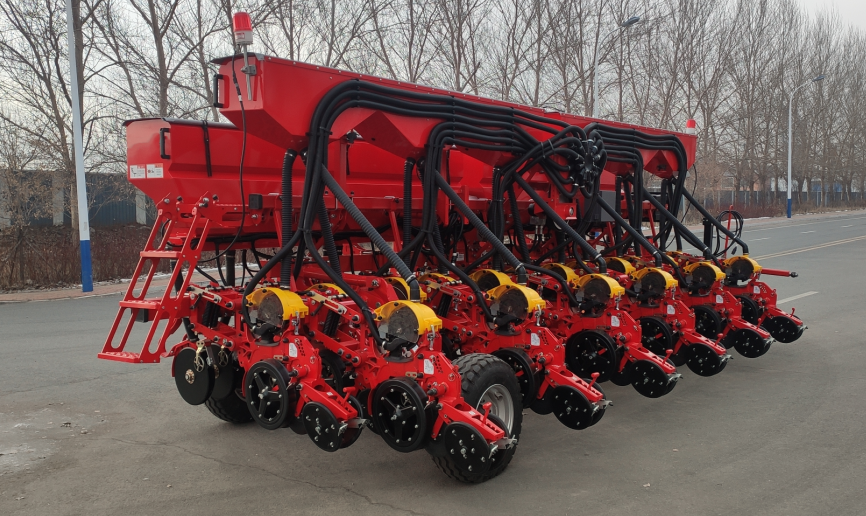
A hole seeder, also known as a seed dibbler or precision seeder, can plant seeds into furrows or holes at specific row spacing, plant spacing, planting depth, and seed quantity, and then cover them with soil.
Hole Seeders can be divided into two main types based on the seed dispenser: mechanical seeder and pneumatic seeders. Mechanical seeder can be further divided into spoon wheel type and finger type. Pneumatic seeders can be split into air suction type and pneumatic type. The structure varies depending on the type of seed dispenser used.
The structure of a hole seeder is similar to that of a seed drill. A disc seeder mainly includes a parallelogram linkage system, seed dispenser, frame, opener, packing wheel, and drive mechanism. In contrast, a pneumatic seeder consists of a main beam, upper mounting frame, lower mounting frame, marker, fan, pneumatic seed dispenser, seed and fertilizer box, and ground wheels.
Spoon Wheel Seeder
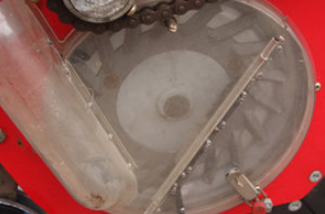
The spoon wheel seeder is a precision seeder that mainly uses a spoon wheel device to achieve precision sowing.
The spoon wheel seeder uses a spoon wheel device to sow seeds. When the seeds enter the sowing box, the seeding wheel starts to rotate, driving the spoon wheel device on the seeding wheel to scoop the seeds to complete the seeding. The spoon wheel can be replaced according to the type of seeds to achieve the best seeding effect. When the seeding wheel rotates to the hollow position, the seeds will fall into the seeding port to complete the sowing.
Application
The spoon wheel seeder is suitable for sowing a variety of crops, including wheat, corn, and soybeans. It is also suitable for a variety of soil types and farming modes. It can easily handle large-scale sowing on plains or small plots on hills.
Advantages
The scoop wheel seeder can achieve accurate sowing of one seed per hole, saving costs and making the spacing between plants more uniform so as to make full use of light energy and water and fertilizer resources. It has a simple and compact structure, is easy to operate, and can quickly complete large-area sowing tasks.
Finger-type seeder
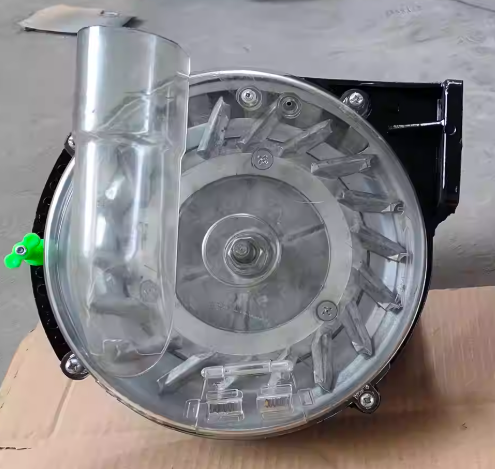
A finger-type seeder is a precision seeder that uses a finger-type planter to pick up and drop seeds.
The finger type seeder mainly uses a finger clamp mechanism to clamp seeds in the filling area, and with the rotation of the seeding disc, brings the seeds to the seeding port to release them accurately into the seeding ditch, completing the sowing. Different crops and soil conditions have different sowing depth
Application
Finger-type seeders are usually suitable for occasions that require high-precision sowing, such as horticulture, flower planting, etc. At the same time, it is also suitable for fine sowing on small plots of land and sowing operations on complex terrains.
Advantages
The finger-type seeder has high sowing accuracy and can accurately control the position and depth of each seed, improving the germination and quality of crops. It is suitable for a variety of crops and soil types. The finger-clip seeder that has been debugged is relatively simple to operate, improves sowing efficiency, and saves labor costs.
Air suction seeder
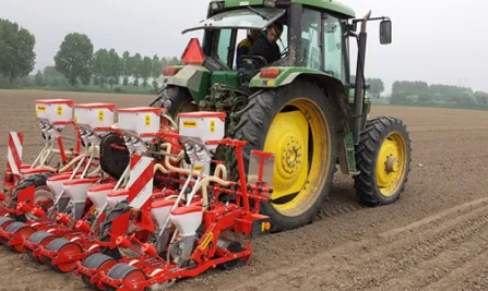
An air-suction seeder does not move seeds mechanically; instead, it uses airflow created by a fan. During operation, a high-powered fan generates negative pressure, connecting the fan to a vacuum chamber through a tube. This vacuum chamber also maintains negative pressure, causing seeds to stick to a perforated disc and rotate with it. When the disc reaches the seed release position, the suction stops, and the seeds drop into the furrow due to their weight or the action of a seed scraper.
Application
The air suction seeder is suitable for sowing various crops such as cotton, soybeans, corn, vegetables, etc. It can also adapt to various uneven terrains. It is suitable for seeds of lightweight crops because the seed transportation uses air flow, which may not be suitable for seeds with excessive weight. Air suction seeders are particularly suitable for large-scale sowing operations.
Advantages
The air suction seeder can achieve single seed sowing, reduce seed usage, and lower seed costs.Using negative pressure to absorb seeds significantly reduces its missed sowing rate. Its planting point is low, which can effectively reduce damage and displacement during the seed falling process. It can complete membrane laying, fertilization, trenching, sowing, soil covering, and compaction work in one go.
Pneumatic seed drill
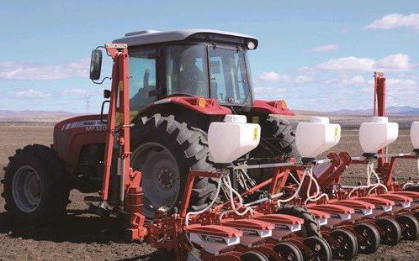
When a pneumatic seeder operates, seeds from the seed box fill the holes in the seed wheel due to gravity and air pressure differences. As the seed wheel turns to the seed-clearing area, the fan blows high-pressure air through a nozzle to remove any extra seeds from the holes, ensuring that only one seed stays in each hole. When the seed dispenser moves to the planting area, the air pressure drops, and the seeds fall out by their own weight into the seeding holes.
Application
Pneumatic seeder s are widely used in large farms, family farms, etc. They can greatly improve sowing efficiency during the sowing season, saving you a lot of time and labor costs.
Advantages
The pneumatic seeder can operate at a high speed while maintaining a qualified seeding rate and ensuring even spacing between plants. Pneumatic seeding does not damage the seeds, avoiding mechanical damage to the seeds and increasing their germination rate, thereby increasing your crop yield. It is suitable for a variety of crops, and you can meet the needs of different crops by replacing the planting wheel and adjusting the parameters.
Combined Seeder
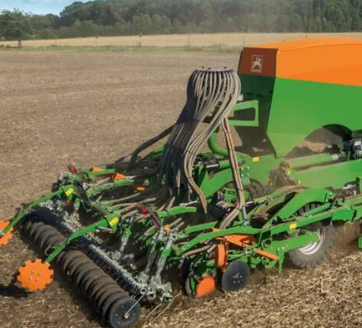
A combined seeder is a seeder that integrates multiple functions, such as sowing, fertilizing, and covering. It consists of a sowing component and related operating components or tools and can complete multiple tasks in one operation.The combined seeder actively integrates sowing, fertilizing, trenching, covering components, and a power drive system.The fertilizing component applies fertilizer to the soil at the same time or before sowing, and then the covering device covers the soil to complete the sowing.
Application
The combined seeder is suitable for large-scale agricultural operations and is suitable for sowing various crops such as wheat, corn, soybeans, etc.
Advantages
It can complete multiple tasks such as trenching, sowing, fertilizing, and covering soil at one time, and accurately control the depth and distance of sowing, which can ensure the uniform growth of crops, increase the yield of crops, greatly improve the efficiency of sowing, and reduce manpower and time costs.
It can also configure fertilization, spraying, film laying, etc. according to the growth characteristics of crops and soil conditions to meet diverse planting needs.
No till seeder
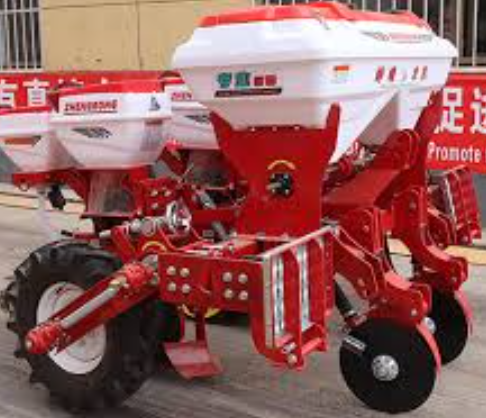
No till seeder is a machine that does not require separate soil tillage before sowing, and can directly carry out sowing work on the stubble. The rotary tiller of the no till machine will cut the untreated straw and crop roots, and then the seeder will sow and fertilize them. The trencher can place broken straw and its roots on both sides of the sowing and fertilizing work position before trenching, and then transmit them to the seeding and fertilizing machine through a chain to complete the seeding and fertilizing work.Finally, the rear compaction wheel or roller compacts the soil, completing the no-till seeder’s entire working process.
Application
We widely use no-till seeders in economic crops like corn, soybeans, and garlic suitable for large-scale planting. These seeders save labor as they don’t require special tillage before sowing. This is especially beneficial in areas with labor shortages or high labor costs.
Advantages
No till seeders directly sow without the need for plowing, saving time and labor costs. The straw covering the surface supplies the soil moisture, fertilizer, and air in a coordinated manner, improving the soil quality and further enhancing the quality of agricultural products. Finally, the no tillage seeder adopts the method of returning straw to the field, preserving the original soil structure, with a strong root system and soil consolidation ability, and improving crop lodging resistance.
Conclusion
To choose the right seeder, it’s important to understand how it works and its applications. Using an unsuitable seeder can lead to poor results. At ANON, we are experienced agricultural machinery experts who can help you make the best choice. Feel free to reach out to us for advice anytime!
FAQ
1. What is the benefit of a seeder?
- Provides planting accuracy
- Saves seed costs
- Increases operational efficiency
- Highly versatile


